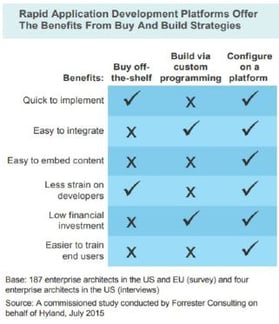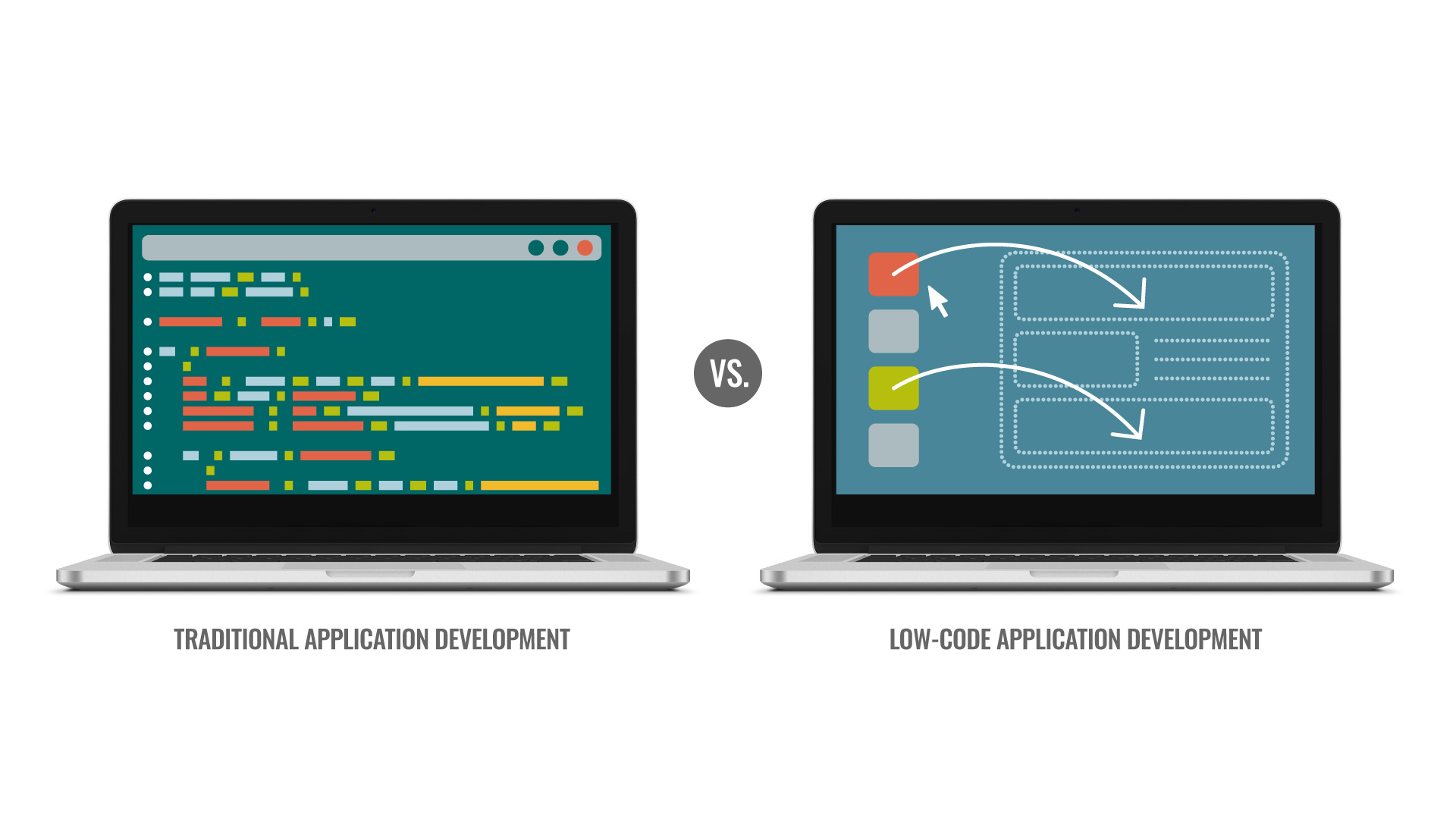4 min read
Low-Code Healthcare Solutions Drive Transformation in Patient Safety
Performance Health Partners
March 27, 2020
Digital transformations in healthcare rely on data-driven technology to improve patient safety and outcomes.
It’s not unusual for larger organizations to routinely juggle information between 800-1,000 applications across disparate, siloed IT systems. (1)
Each new technology solution requires a large amount of resources, specialized personnel to implement and maintain, and an overall increased cost of technology. This presents a heavy burden on healthcare professionals’ time, energy, and available capital. (2)

What is Low Code?
“Low-code” is a visual development approach to application development. It refers to the ability to create applications that offer real business value while using a minimal amount of new code. (2)
Codeless development empowers nontechnical teams to solve workflow gaps to drive outcomes.
Essentially, instead of coding new applications from scratch, users can configure an intuitive, “drag-and-drop” system to build custom applications that fit their unique needs. (2)
The goal is to improve workflow efficiency and patient experience without devoting significant time and resources to the development process. With a low code platform, healthcare teams can create, iterate, and release applications in a fraction of the time it takes with traditional methods. (3)
Rapidly deliver technology solutions with minimal investment in creation, setup, training, and deployment. (4)
Benefits of Using A Low Code Platform in Digital Transformation
Low-code platforms offer a variety of benefits to healthcare organizations:
1. Achieve better integration.
A low code platform can help organizations combat the challenge of siloed IT systems.
In fact, 41% of organizations report better integration across platforms when leveraging a codeless development platform. (4)
Codeless or low code platforms can help integrate patient information across systems, and give care teams deeper insight into performance across departments. With real-time data easily accessible, healthcare organizations can see the bigger picture of how their teams are operating and easily identify areas of opportunity to improve outcomes.
2. Rapidly deliver technology solutions with minimal investment in creation, setup, training, and deployment.
The traditional process of hiring developers and creating applications in-house can be extremely time-intensive (not to mention costly).
When leveraging a codeless development platform, 53% of organizations report faster rollout of applications. (4)
3. Empower non-technical teams to solve workflow gaps to drive outcomes.
Low-code platforms give innovators on care teams the opportunity to create solutions to challenges that are unique to their organization. When utilizing a low-code solution, clinicians and healthcare staff don’t need to know how to code in order to build secure and functioning apps. Instead, a “drag-and-drop” visual development method can be used to produce apps that are specific to every department and healthcare sector. (5)
4. Reduce costs across departments.
Low code platforms are more cost-effective than building solutions in-house or piecing together multiple different systems to achieve an enterprise solution.
36% of organizations report lower total cost of ownership of business applications when leveraging a codeless development platform. (4)
5. Develop applications that are secure and compliant with HIPAA
It’s crucial that healthcare applications are developed with privacy, security, and compliance in mind. This calls for an involved certification process for each technology solution. (6) A low code platform built specifically for healthcare means that all applications are custom built in a secure and HIPAA compliant environment.

Use Cases for a Low Code Healthcare Platform
When solutions live on a singular low-code platform, data from all solutions can be easily exchanged. There are plenty of ways that the healthcare industry can use low code platforms to streamline processes, optimize performance, and increase the quality of care provided. Here are just a few examples of use cases for using a low code platform in healthcare:
1. Incident Reporting System
With a low code platform, care teams can integrate solutions that make it easier for team members to report incidents and events, manage the life cycle, events and perform peer and mortality reviews.
With a low code application, team members can easily report patient safety events and incidents digitally and automatically route for risk management.
2. Quality Monitoring and Clinical Rounding Software
3. Employee Safety
Top Features for Low-Code Healthcare Platforms
According to IDC research, healthcare organizations should look out for certain features when in the market for a low-code app development platform. (7) Such features include:
- Capability with mobile, tablet, and desktop devices
- Cloud hosting
- HIPAA compliant
- Interoperability with other health IT systems and legacy systems
Healthcare organizations should be sure to think about all of these features when choosing a low code platform to best fit their needs.
Performance Health Partners’ Low Code Healthcare Solution
Is your healthcare organization ready to access the benefits of a low code platform? Performance Health Partners customizable, low code solutions help organizations improve care outcomes across departments and teams.
PHP offers a variety of solutions in the areas of incident reporting, quality & performance improvement, operations, compliance, audit, and more – all on one low-code platform.
References:
- How low-code platforms are driving digital transformation in value-based healthcare. (2017). Beckers Hospital Review. Retrieved from https://www.beckershospitalreview.com/healthcare-information-technology/how-low-code-platforms-are-driving-digital-transformation-in-value-based-healthcare.html
- Low Code: What Is It & How Does It Benefit Healthcare Insurance And Finance Organizations? (2018). IPD Solutions. Retrieved from https://www.ipdsolution.com/ipdblog/low-code.
- An Introduction to Low Code Development. (2019). Retrieved from https://www.mendix.com/low-code-guide/.
- Forrester Study: To Be Brilliant in the Moment, Think Beyond Build versus Buy. (2015). Forrester Consulting. Retrieved from https://www.onbase.com/en/forms/forrester-thought-leadership-paper-brilliant-in-the-moment.
- How No-Code App Development Platforms Aid Healthcare Industry. (2017). HIT Infrastructure. Retrieved from https://hitinfrastructure.com/news/how-no-code-app-development-platforms-aid-healthcare-industry.
- Exploring Low-Code, Outsourcing for Healthcare App Development. (2018). HIT Infrastructure. Retrieved from https://hitinfrastructure.com/news/exploring-low-code-outsourcing-for-healthcare-app-development.
- Top Features for Healthcare Low-Code App Development Platforms. (2017). HIT Infrastructure. Retrieved from https://hitinfrastructure.com/news/top-features-for-healthcare-low-code-app-development-platforms.


